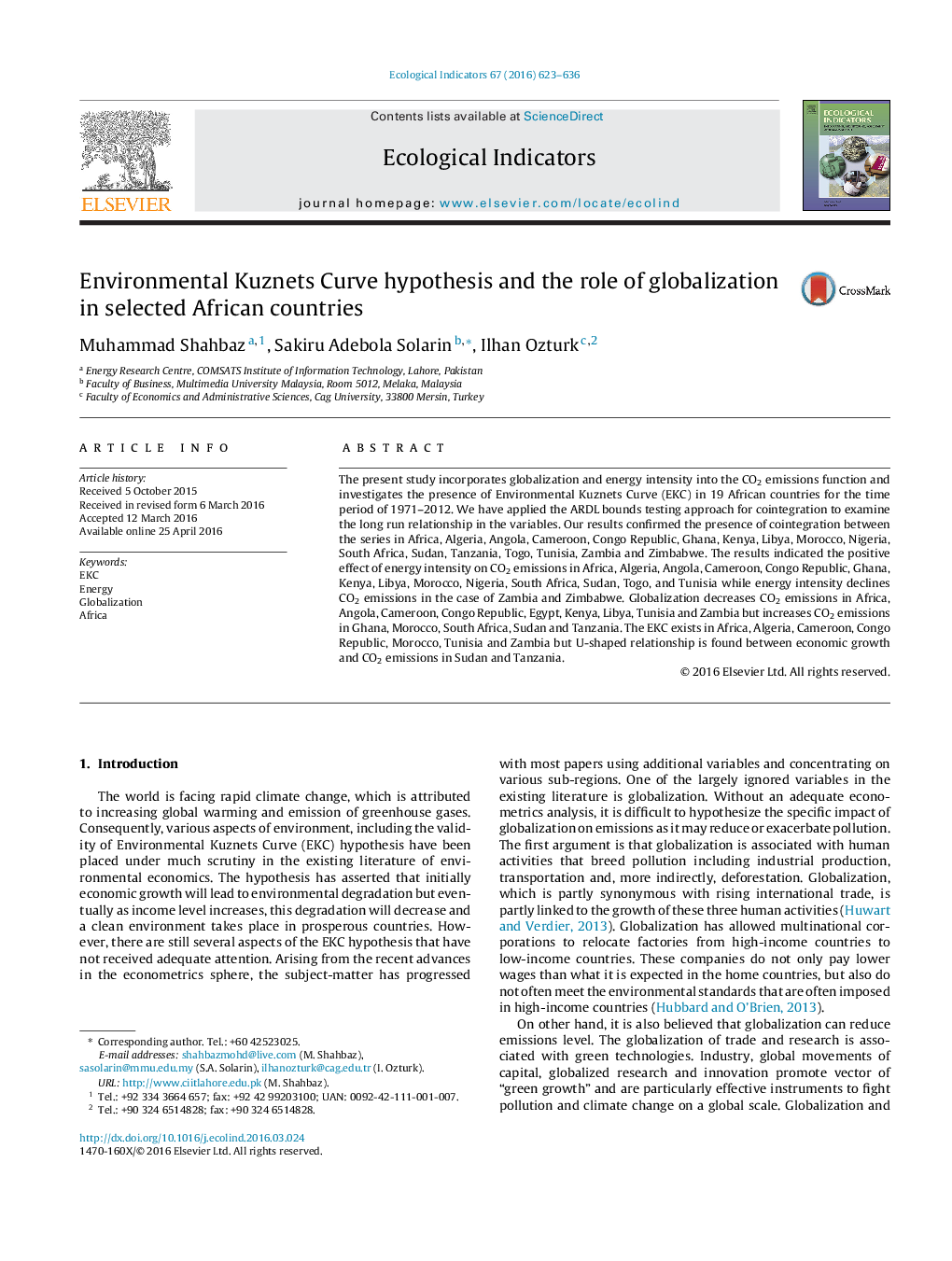| کد مقاله | کد نشریه | سال انتشار | مقاله انگلیسی | نسخه تمام متن |
|---|---|---|---|---|
| 4372908 | 1617135 | 2016 | 14 صفحه PDF | دانلود رایگان |
• We examine the impact of globalisation on CO2 emissions in 19 African countries.
• The results suggest that globalisation decreases CO2 emissions at the panel level.
• The effect of globalisation varies across the countries.
• The presence of EKC is supported in six countries.
The present study incorporates globalization and energy intensity into the CO2 emissions function and investigates the presence of Environmental Kuznets Curve (EKC) in 19 African countries for the time period of 1971–2012. We have applied the ARDL bounds testing approach for cointegration to examine the long run relationship in the variables. Our results confirmed the presence of cointegration between the series in Africa, Algeria, Angola, Cameroon, Congo Republic, Ghana, Kenya, Libya, Morocco, Nigeria, South Africa, Sudan, Tanzania, Togo, Tunisia, Zambia and Zimbabwe. The results indicated the positive effect of energy intensity on CO2 emissions in Africa, Algeria, Angola, Cameroon, Congo Republic, Ghana, Kenya, Libya, Morocco, Nigeria, South Africa, Sudan, Togo, and Tunisia while energy intensity declines CO2 emissions in the case of Zambia and Zimbabwe. Globalization decreases CO2 emissions in Africa, Angola, Cameroon, Congo Republic, Egypt, Kenya, Libya, Tunisia and Zambia but increases CO2 emissions in Ghana, Morocco, South Africa, Sudan and Tanzania. The EKC exists in Africa, Algeria, Cameroon, Congo Republic, Morocco, Tunisia and Zambia but U-shaped relationship is found between economic growth and CO2 emissions in Sudan and Tanzania.
Journal: Ecological Indicators - Volume 67, August 2016, Pages 623–636
